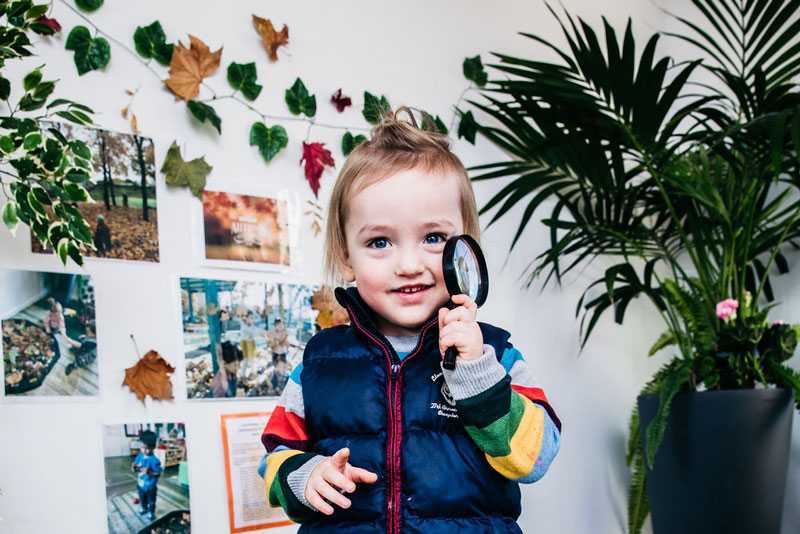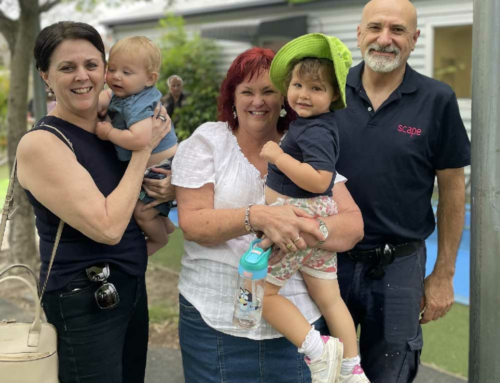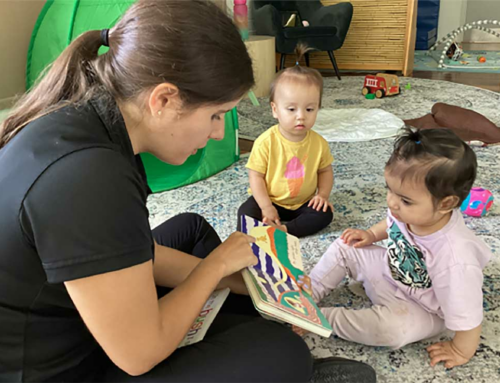Head lice and nits are common complaints from families with young children. If you’ve not experienced them before, you may not know how to get rid of head lice effectively. Unfortunately, they are a widespread problem that can creep up on you unexpectedly.
Discovering your child has nits can feel embarrassing even though Australian researchers estimate about one in three primary school children have head lice at any moment in time. Fortunately, there are effective treatments available.
However, sometimes it takes time and patience to get rid of head lice for good. The process to remove them can feel frustrating, especially when family and close friends are infected too. If you don’t own a good magnifying glass, now’s the time to get one.
While head lice and nits may be unsightly, it is nothing to be ashamed of, and it happens to the best of us. One of the biggest challenges is getting children to sit still long enough to comb for lice and eggs.
In this article, we share our experience and explore:
- What are head lice and nits?
- How do you get head lice?
- Head lice symptoms.
- What to do if your child gets head lice.
- What to do if you get head lice.
- Home remedies for head lice.
- How to remove lice and eggs.
- Store-bought products to treat head lice.
- How to remove lice from long hair.
- The risk of lice reinfestation.
- The best prevention methods.
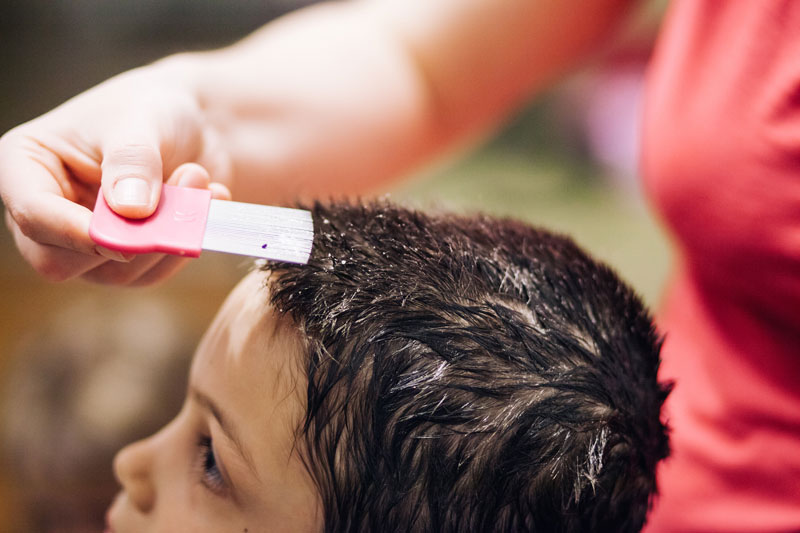
What are head lice and nits?
Head lice or human lice are parasitic insects that feed off human blood. They are the primary carriers of the condition known as Pediculosis. Lice lay eggs (known as nits), on hair shafts close to the scalp. The eggs hatch in about ten days. Getting lice and nits is annoying, but your child can still be healthy.
Head lice have been around for centuries and were once considered a sign of poverty. However, these days head lice are an inconvenience for many families across Australia and the world.
Because we have been battling head lice for many centuries, they’ve become immune to the pesticides and insecticides we use against them. Pesticides can also be harmful to children and adults, so it’s best to try a conditioner, licensed herbal or natural remedy first that combines with the mechanical removal of lice and nits.
An infestation is called Pediculosis Humanus and usually involves ten or more active head lice. There are a few basic facts that you should know:
- Lice are wingless insects. They don’t jump or fly.
- They can move super fast when they’re not stunned.
- They can live on other objects like hairbrushes, hats and pillows for up to 72 hours. They may appear as tiny long brown flecks that cling to the hair.
- A nymph is a baby louse. They can be challenging to see without a magnifying glass.
- Black-brown eggs are unhatched nits. White eggs have hatched.
- Head lice don’t carry disease, but scratching can cause an infection.
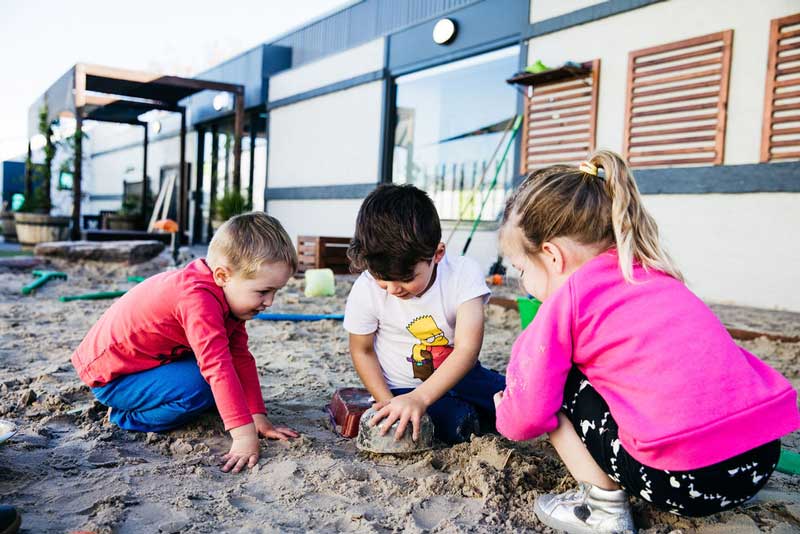
How do you get head lice?
Head lice transfer quickly from one head to another, usually through contact when children are having fun and playing. For example, when two children bump or press their heads together, it provides an opportunity for lice to migrate.
When children and adults share hairbrushes or hats, head lice can also jump ship.
Lice can be tough to get rid of, especially if you don’t have much experience with them or don’t notice them until they’ve made themselves at home. A pregnant female louse can lay 3-6 eggs every day for thirty days. Nits hatch within ten days. The itching often starts after they have multiplied.
Head lice symptoms
The most obvious symptom of head lice is itching. The itch can get worse at night, which may interrupt your sleep. If you notice your child excessively scratching, it might be time for a lice and nits check-up.
Nits (eggs) attached to the hair near the scalp are another sign of head lice. If you use a magnifying glass, you should be able to see them easily.
Aside from the itching, head lice can create this creeping sensation. It’s similar to the chilling feeling that comes with the children’s game where an imaginary egg is cracked open on the top of your head.
Head lice also move to softer parts of your head. For example, the back of your neck or around your ears. Their small bites happen at any time of day but especially at night when lice are more active.
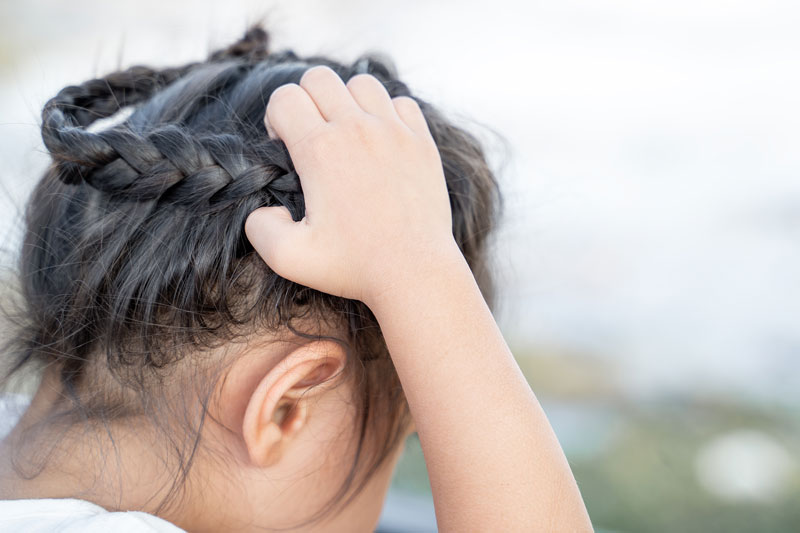
What to do if your child has nits in their hair
If you see your child scratching their hair repeatedly, it’s a good idea to check for nits and lice. You will want to gather a big bottle of conditioner, a metal nit comb and a few boxes of tissues.
Families use the conditioner to stun the lice and stop them from moving. This step will allow you to check your child’s head for any of these pesky insects. Scratching doesn’t always mean your child has an infestation. Sweat and dandruff are two other reasons children scratch their heads.
However, if you see brown or white eggs stuck to strands of hair, these are nits. The white eggs have already hatched, while the brown eggs are waiting their turn.
You have a few options available for tackling lice and nits:
- You can use a conditioner with a wet-combing method to stun lice and manually remove eggs. This mechanical method works well for short hair.
- You can buy a store based herbal treatment. If you choose this option, always follow the directions on the bottles. Most will require at least one reapplication.
- You can treat your child’s hair with a chemical treatment for head lice and nits. Pharmacies have some chemical treatments on their shelves, while more potent treatments require a script from a specialist or GP.
- You can also book your child into a head lice clinic that will remove the head lice and nits for you.
Some families start with option one and move on to option two, three and four when the other options don’t work. Some head lice can be challenging to remove and resistant to treatments, but often step one is all you need.
If your child attends an early childhood education and care service, you should notify the service immediately. Generally, children with lice are still welcome to participate in early learning education and schools as long as treatment has started. However, providing notice allows a services to inform other families of an outbreak without breaching your privacy.
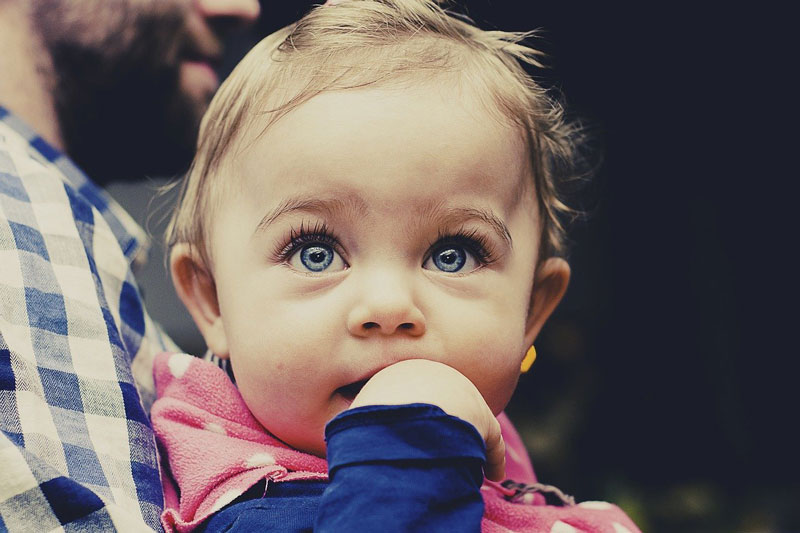
Head lice in adults
If a child in your family has lice, then there is a good chance an adult has head lice too. All it takes is for one pregnant louse to move to another person for a new infestation to take hold.
Check all family members, including yourself. Your cat and dog should be fine as human head lice are not known to migrate to other animals. If you love cuddles, hugs and frequently share things with your child, like hats and brushes and they have lice, you may have some unwanted visitors too.
Have someone you trust check your hair and comb it for lice. Alternatively, you could try doing it yourself while in the shower. If you discover you have lice too, immediately start treatment.
Home remedies for head lice
There are several home remedies promoted on the internet. However, we only recommend the hair conditioner and nit comb method also known as mechanical removal.
One home remedy is lemon juice. Lemons contain citric acid, and when combined with sunlight, they can bleach the hair. Unfortunately, there’s no science behind lemon juice being an effective agent against head lice and nits. It may even irritate scratches on your child’s scalp.
Vinegar, tea tree oil, eucalyptus oil, methylated spirits, mouth wash, hair straighteners and dryers are also not recommended home remedies. Some of these home remedies are highly toxic and can cause children unintentional harm.
The most effective home treatment is the head lice mechanical treatment using conditioner, patience and a good nit comb.
The biggest challenge is getting your child to stay still long enough to comb through their hair. If your child has long hair and lice have taken over, you could be looking at a long delousing session.
You will also need to repeat the whole process in 3-5 days. Then, if you find head lice and nits again, you will need to keep repeating the process until they’re gone.
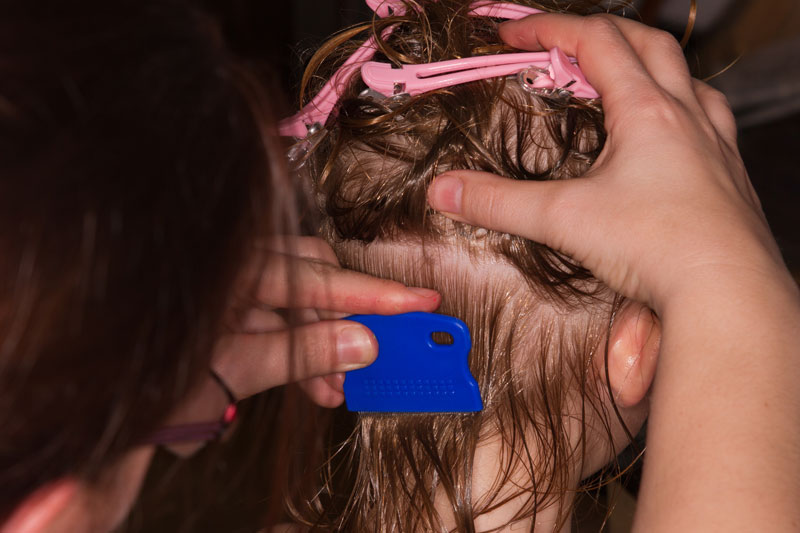
How to remove lice and eggs from hair
Preparation for mechanical removal: To avoid conditioner dripping into the eyes, use cotton wool strips on the forehead. Keep a facecloth and a few towels handy too. A spray bottle filled with water can help keep hair moist in case the conditioner begins to get dry.
- Cover your child’s head with the conditioner until the hair and scalp are completely soaked.
- Using a regular comb, brush the hair to one side or to the front. If it’s long you may want to clip it up on top of the head. Pre-combing will also help to remove any knots that can make eliminating head lice and nits more difficult.
- Starting at the back or side with less hair, take up a small lock of hair and drag the special nit comb through it. Start at the roots and comb to the end of the strands.
- Wash or wipe the comb removing all signs of head lice and nits from its surface.
- If you found a large number of insects on the comb, you should repeat the process on the same lock of hair until the comb is lice and nit free.
- Keep the hair you’ve cleaned separated.
- Then, take up a new lock of hair and repeat the process.
- Keep going until you have checked every strand. Don’t stop or give up, especially if your child has long hair. If you discover knots while using the nit comb, remove the knots, then do that strand of hair again.
- Once you’ve finished going over the entire scalp and hair, wash the conditioner out.
- Repeat every 3-4 days over two weeks or until every louse is gone.
Delousing can be exhausting for both child and family. Start early in the day, especially if your child has long hair. You don’t want to be still doing it late at night. Comfort your child and get them to open up about their emotions so you can empathise and teach your child about kindness.
The conditioner does not kill head lice or nits. It is effective though, in “stunning” head lice and their nymphs. It slows down their movements so you can manually remove them.
You need to keep the hair moist and smothered in conditioner to trap them until you can comb them out. Separating the hair with hair clips and ties can be helpful if there is a lot of hair but check and wash everything you use for head lice and nits before you put it back in the hair, including the combs.
This home remedy may be much more trying for very long hair. It is harder to keep the ends of long hair moist and smothered, and it is more likely to knot.
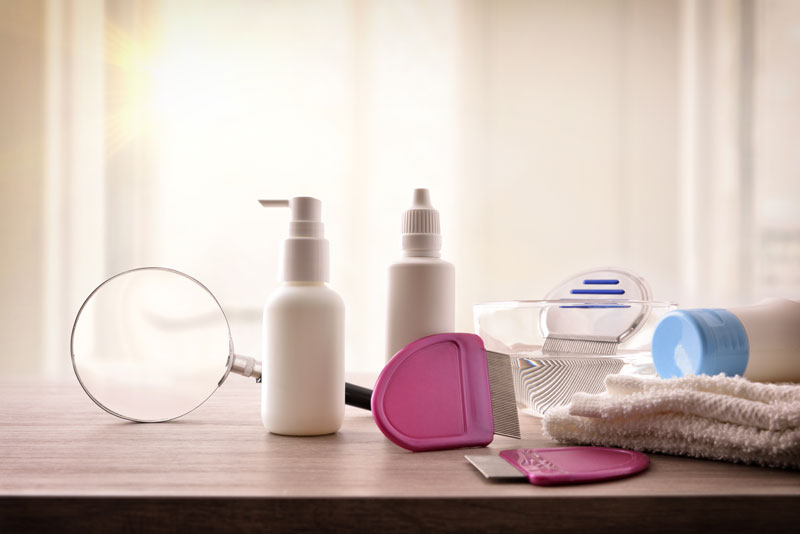
Store-bought head lice treatments
You can purchase conditioner, herbal and chemical-based nit and head lice treatments over the counter. Always check the active ingredients and whether they are suitable for your child.
It is highly recommended not to use chemical treatments for babies. Talk to your pharmacist or general practitioner (GP) about what’s safe for your child. We recommend trying conditioner based treatments used with wet combing first for children under five years of age.
If purchasing a chemical treatment, read the instructions and only use the recommended amount. Don’t overuse or reuse too soon. If a treatment doesn’t work, try a different one rather than reusing the same one.
When using a chemical-based treatment, always check the active ingredients. Some compounds can trigger adverse effects like asthma. Children who have been scratching may also find chemical treatments irritate sores.
Always seek advice from your pharmacist or GP on what is suitable for your child when choosing a chemical-based treatment.
How to remove lice from long hair
Removing lice from long hair can be a bit trickier. Long wet hair knots more quickly when using nit combs. Be patient and prepared for long delousing sessions. Put on a distraction like music to keep them entertained.
If treatments are not working, seek advice from your GP who may refer you to a specialist.
Avoiding another head lice infestation
You should check all family members for head lice and notify close contacts to reduce the risk of another infestation. All it takes is one lousy pregnant louse to go unchecked for the infestation to have a chance of spreading.
Check your family’s hair every few days for signs of active head lice during treatment. While metal nit combs are the best at removing eggs, it can be difficult as the female louse glues her eggs onto the base of the hair shaft.
If you only see dead nits when using a chemical-based treatment, you may not need to retreat. Overuse of chemical solutions can make lice resistant.
You can wash pillowcases and bed linen in hot water. However, as lice rarely survive for long periods without a warm host to feed on, a deep house clean is not necessary.
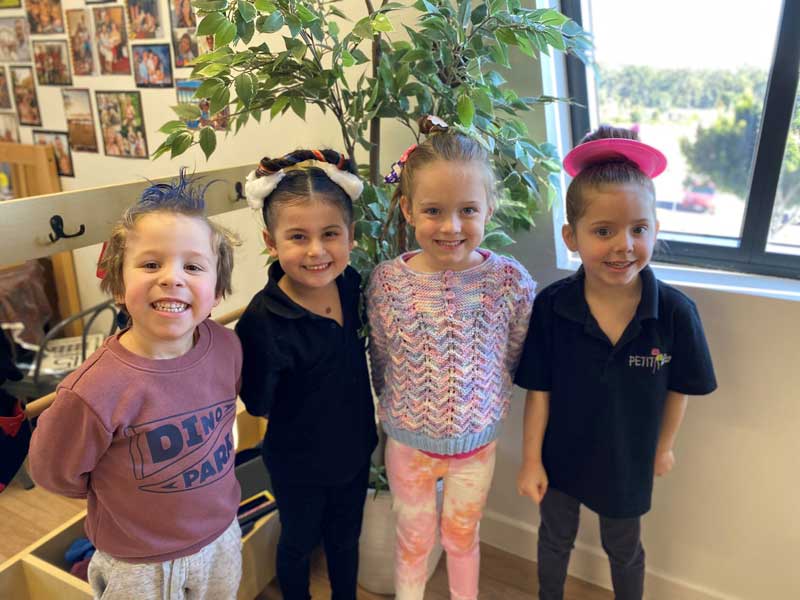
Preventing head lice
Head lice and nits are a common problem, especially for young children. If your child has long hair, putting their hair up, braiding or plaiting it can reduce the risk of lice spreading.
There is no evidence that clean or dirty hair attracts lice. However, families should regularly check their child’s head for signs of lice.
Teach your child about why they should not share hats, hair accessories, brushes or combs. Read children’s books to them about head lice so they can learn interesting facts and feel at ease.
Children are going to continue to have close contact especially in early learning services and primary school, so it always pays to keep an eye out for head lice symptoms.
Get rid of head lice and nits with a good nit comb
It can be a horrible feeling finding live head lice and nits in your child’s hair and also in your own. But, not checking can lead to an infestation that’s harder to remove. So, be vigilant and check your family’s hair regularly for live lice and nits.
The mechanical removal method is recommended as the first type of treatment. The conditioner stuns lice and does not add to the lice resistant problem. If that doesn’t work with your child, try a store-bought product next.
Talk to your GP and pharmacist about which product is best suited for your child. Ask about a head lice chemical treatment if these nasty insects keep hanging around. Although, do not use chemical treatments on children under the age of one.
Act fast once you become aware of lice and nits in your child’s hair. Don’t put it off to the next day or wait until the weekend. The sooner you act to remove them, the happier your child will be.
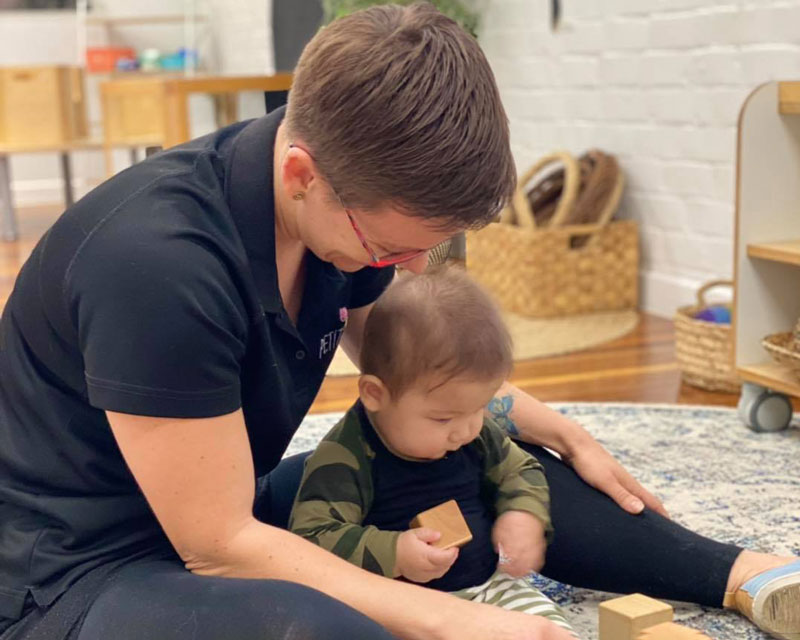
Be supported with Petit Early Learning Journey
At Petit ELJ, we are one big family. We believe in partnering with families about their child’s health, development and learning. We’re also here to help support parents with parenting concerns and challenges, like how to effectively and safely get rid of head lice.
You can review all our policies in our reception area including our one on head lice. We invite you to tour your nearest centre and talk to our Centre Director about our philosophy and beliefs. Learn more about how we support and value our children and their families.
